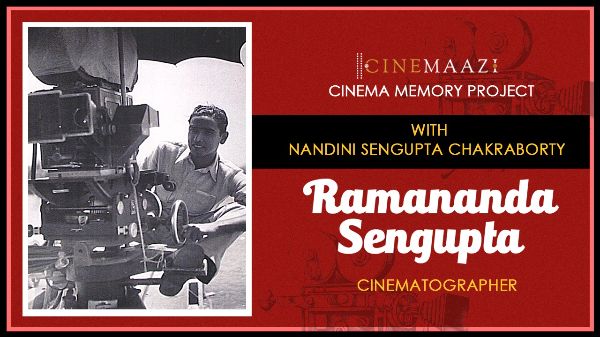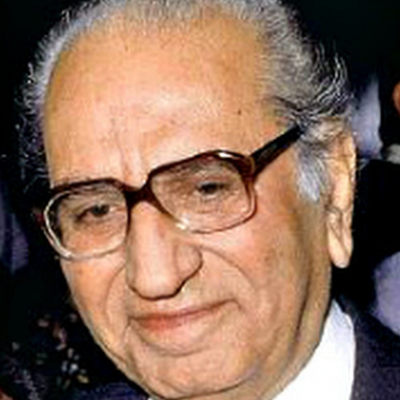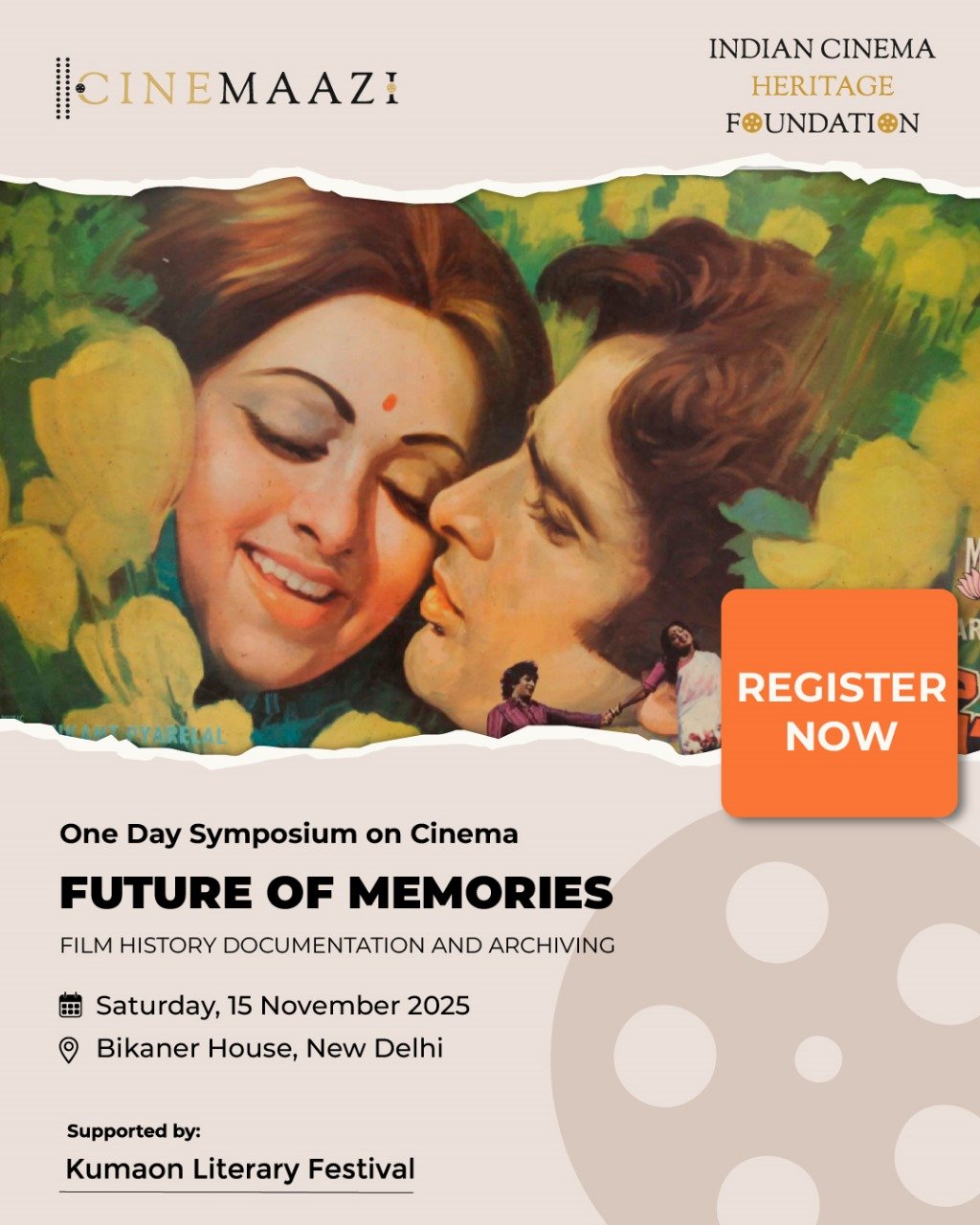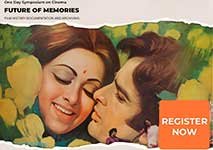Leela Desai
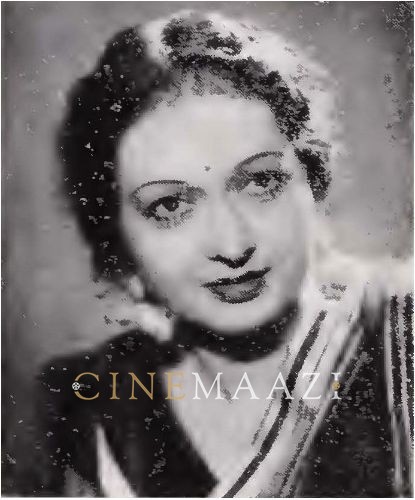
Subscribe to read full article
This section is for paid subscribers only. Our subscription is only $37/- for one full year.
You get unlimited access to all paid section and features on the website with this subscription.
Not ready for a full subscription?
You can access this article for $2 , and have it saved to your account for one year.
- Primary Cinema: Hindi
- Parents: Satyabala Devi and Umemdra Lalbhai Desai
Active in the early talkie era of Indian cinema, actress and producer Leela Desai is known for films such as President (1937), Kapala Kundala (1939), and Nartaki (1940). Born in America, she grew up in India, her proficiency in and love for dancing helping garner acting offers. Signed by the famous New Theatres, she became popular overnight. Later moving from Calcutta to Bombay, she would continue acting with other studios in films such as Tamanna (1942), Nagad Narayan (1943), Mujrim (1944), Kaliyan (1944), Meghdoot (1945), and Dev Kanya (1946), becoming one of the high-paying actresses of the industry. Ambitious, she was also known to be a good businesswoman. Her sister, actress Monica Desai, was married to film director Phani Majumdar.
She was born in New York to Umemdra Lalbhai Desai, her Gujarati father and his second wife, a Bengali named Satyabala Devi. Her father was a doctor by profession and her mother was musically trained in her childhood. Her parents had gone to America because her father, who was in the IMS, wanted to earn a higher degree in the US. When she was barely three months old, she was brought back to India “before the fast tempo of American life could get into her blood.” Her parents hoped that their daughter would grow up like any orthodox Indian girl; they had no clue she would grow up to become a glamorous film star. She had four other siblings, Daulatrai, Shanti, Suprakash, and Monica. She had many half-siblings from her father’s other marriages.
After returning to India, her father became the state surgeon of Rampur state, and his wife and six children went to live with him there. When Leela was six, she went to Calcutta, where she attended Bethun school, studying there till standard four. As she didn’t keep very good health, she was sent to Dhow Hill College at Kurseong. Mischievous by nature, she still managed to complete her exams. She went on to study privately and passed both her Matric and IA exams.
Showing an inclination towards dancing since childhood, she was trained in Kathak under the guidance of two masterful dancers, Amaladevi first and then Sohanlal. Nursing a secret longing to join films, she partly satisfied this desire learning dance. Her dedication to mastering the craft took her to the epicentre of dance culture in Lucknow. Here, she trained under the famous dance teacher Shambhu Maharaj. Reportedly, her mother did not approve of these lessons (her father had passed away by this time) but she held her ground and over-ruled her objections. She went on to perform in several charity shows and made a name for herself as a dancer.
It was in the course of one of her dance recitals, that one of New Theatres’ directors, Hemchandra Chunder spotted her talent and offered her a job in films anytime she wanted one. Not very interested at the time, she, however, relented after watching Chunder’s film Karodpati/ Millionaire (1936), and decided to take up acting as a prospective career. She had made such an impression on Chunder, that the filmmaker and Nitin Bose went all the way to Lucknow to offer her a contract. Though there was no film equipment in Lucknow with which to test her, they were so impressed by her that they signed her on for a year.
Moving to Calcutta, she debuted in the New Theatres’ film President (1937) directed by Nitin Bose. She starred alongside stars such as Kamlesh Kumari and K L Saigal in this social romantic drama film. A love triangle with a social content, it highlighted the conditions of the mill workers. Playing the role of the younger sister Toola, she was so successful in the part that she became famous overnight. She also performed a Manipuri dance in the film; the first time that this form of dance had ever been filmed.
She also inadvertently gained publicity courtesy a controversy started in the newspapers over which province she belonged to. Since her mother was a Bengali, the Bengali papers boosted her as a daughter of Bengal; this irked the Bombay newspapers as her father was a Gujarati.
Her next release, Dushman (1939), also directed by Nitin Bose, was a romantic drama with a focus on tuberculosis. The plot revolved around two friends who want to marry the same girl unknowingly till one of them discovers he has tuberculosis. He decides to sacrifice his love but ends up in a sanatorium where he is treated. This film too was a success.
Her third film, Kapal Kundala (1939), directed by Nitin Bose and Phani Majumdar, also starred Sailen Choudhury and Najmul Hussain.
Nartaki (Debaki Bose, 1940) would be her last film for New Theatres. She acted in both the Hindi and Bengali versions of the film and played the character of the dancer Roopkumari. A 16th century period costume drama, the plot revolved around a courtesan who, with the help of the king, tries to avenge her insult by the priest of a temple monastery. A commercial success, the film was recommended as one of the top films of 1940, and cited as the first “major cinematic-essay” on a dancer's life.
With the exception of Kapal Kundala, these films were also made in Bengali and Leela danced in all of them. At New Theatres, she frequently worked with filmmakers such as Nitin Bose, Debaki Bose, and Phani Majumdar.
Her first love was dancing and, after making these films, she went on a dance tour of India with her troupe. The tour was a success and helped her earn a good amount as well.
She then headed for Bombay, signing a one year contract with Famous Studios or Laxmi Productions. The studio’s Tamanna (1942) would be her first film in Bombay. The film was directed by Phani Majumdar, who also wrote the screenplay. This was the first film from the Laxmi banner, which had been started by Chimanlal Trivedi who earlier headed Circo Productions. The main cast included P Jairaj, and Karan Dewan. The story revolves around two people, Ramesh and Uma, who are in love with each other; however, Uma forgoes her love for Ramesh in order to help him fulfill his mission by marrying someone else.
Her 1943 release Bichar also known as Paraya Dhan, was a drama film directed by Nitin Bose, with a cast that included Maya Banerjee, Dilip Bose and Jagdish Sethi.
In New Huns Pictures’ Vishram Bedekar directorial Nagad Narayan (1943), she played a comedy role alongside Baburao Pendharkar. She acted in Nitin Bose’s Mujrim (1944), Kidar Sharma’s Kaliyan (1944) and as Debaki Bose’s lead in Meghdoot (1945).
At one point, before the war started, she had arranged to go abroad but when problems arose with Germany, she had to cancel her plans. She had also hoped to succeed as a dancer in America, and perhaps even enter Hollywood, being a keen admirer of the French-American actor Charles Boyer.
In an interview feature in the July 1942 issue of FilmIndia, the writer described her thus: “Leela lives alone at Worli with a girl cousin. She amuses herself by going for drives (when the petrol permits) and going to see good English and American films. She does not belong to any club and she doesn't smoke or drink. She uses very little make-up at home and likes simple saris and jewellery. She is 5 ft. 1" tall and weighs 7 si. 10 lbs. She looks larger than these figures would give you to understand because she is inclined to be plump. She has a round face and a soft expression. Her skin is light in colour and she has brown eyes and very curly black hair which she keeps at shoulder length. (Seeing her off the screen you would not guess that she is an actress. She looks like any attractive but quiet Indian girl. I have no doubt that she is a very different and glamorous person on the screen because she seems very versatile.) For a famous actress and dancer she is very humble and modest… Leela has no superiority complex. She says she never feels, "I am a great artiste and you'd better treat me like one," and because of this she has made many good friends wherever she has been. She is so absorbed in her work that she has no desire to get married in a hurry but if Mr. Right comes along and she falls in love with him she will give up her work to marry him. She feels that there can be no happiness in the home where the husband and wife both work. Her ideal man is one who is manly, broadminded and hardworking. She would hate to marry someone who is idle and rich, and would hate to marry an actor. She has no prejudices about the caste of her prospective husband… She likes getting fan mail because her fans' letters encourage her and she is very grateful to them for pampering her ego… Leela is eager for fresh conquests in the film line. She wants to win over her Bombay public completely. She has won me over with her friendliness alone and I shudder when I think of the havoc she is going to cause when she sets about conquering her public with all her talent and glamour turned on.”
Desai had a keen interest in other aspects of the film world, such as producing. In pursuing her interest, she acquired the rights of the Hindi version of Hemen Gupta’s National award-winning Kabuliwala (1961). Later, she gave it to producer Bimal Roy, but she has been credited as an associate producer for the film, which revolves around a poor Afghani man, who becomes a dry-fruit vendor in India, and his bond with a young girl who reminds him of his own daughter.
In her decade long career, Desai appeared in approximately 11 films but retired relatively early for health reasons.
-
Filmography (17)
SortRole
-
Suhaani Raat 1974
-
Geet Govind 1947
-
Soorat 1947
-
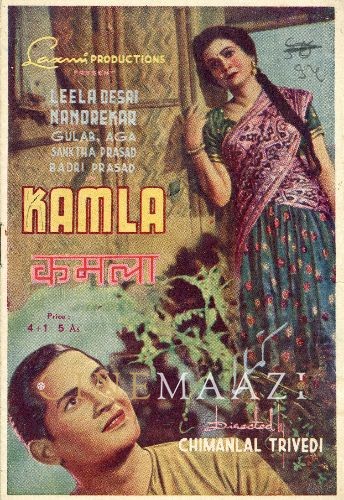
Kamla 1946
-
Dev Kanya 1946
-
Maharani Minal Devi 1946
-
Meghdoot 1945
-
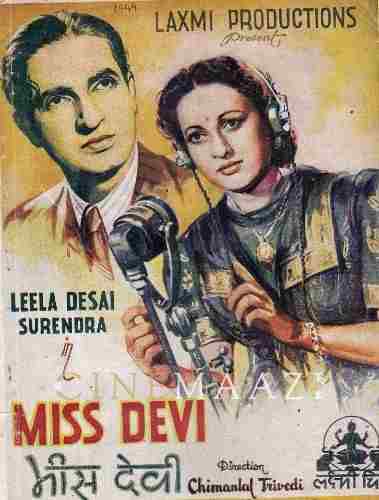
Miss Devi 1944
-
Kaliyan 1944
-
Mujrim 1944
-
Inkar 1943
-
Nagad Narayan 1943
-
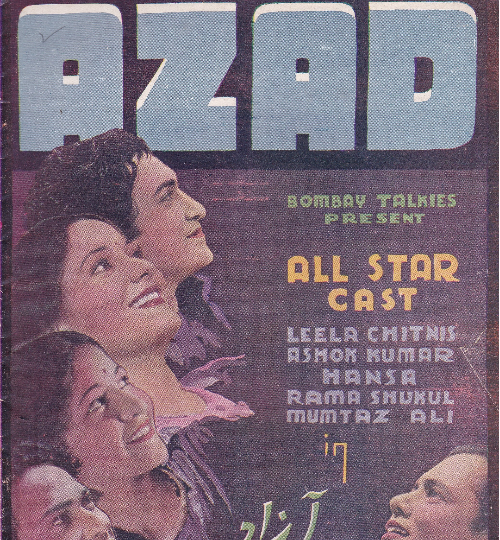
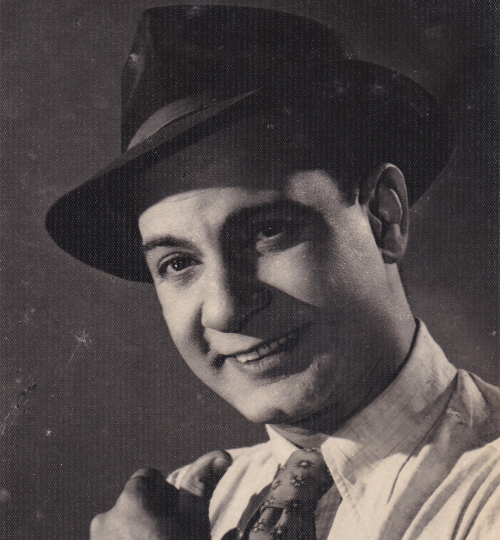
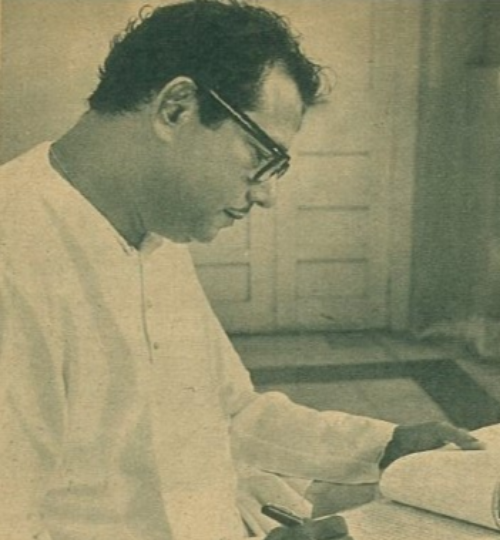
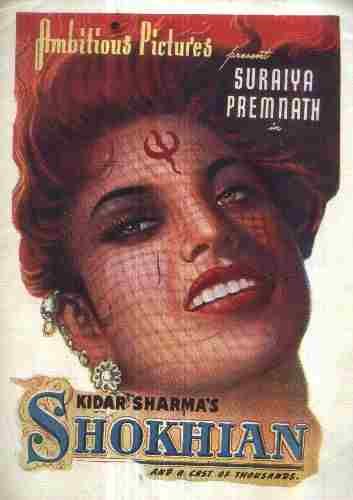
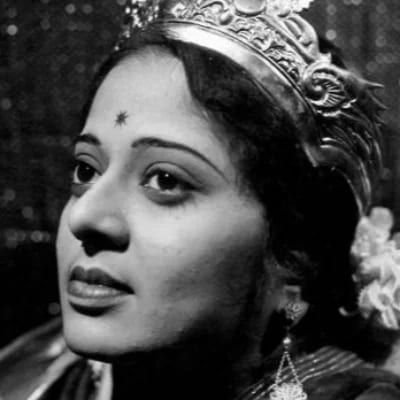
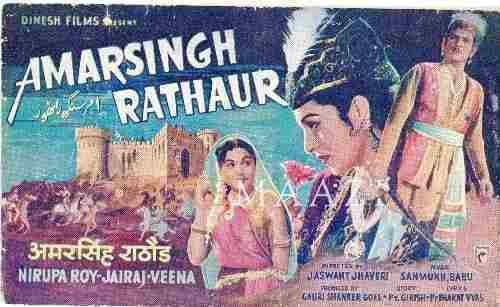
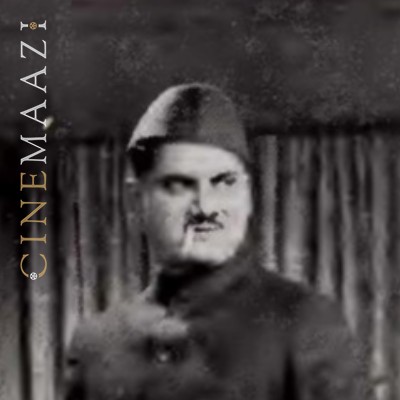
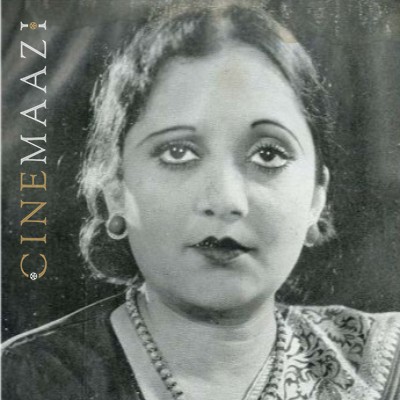
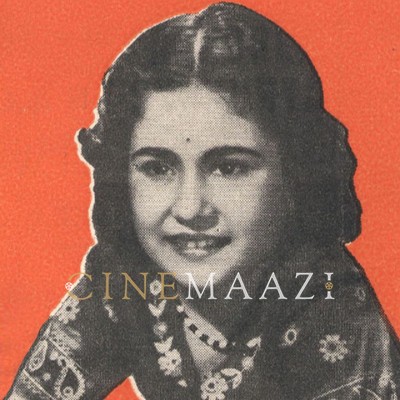
.jpg)
